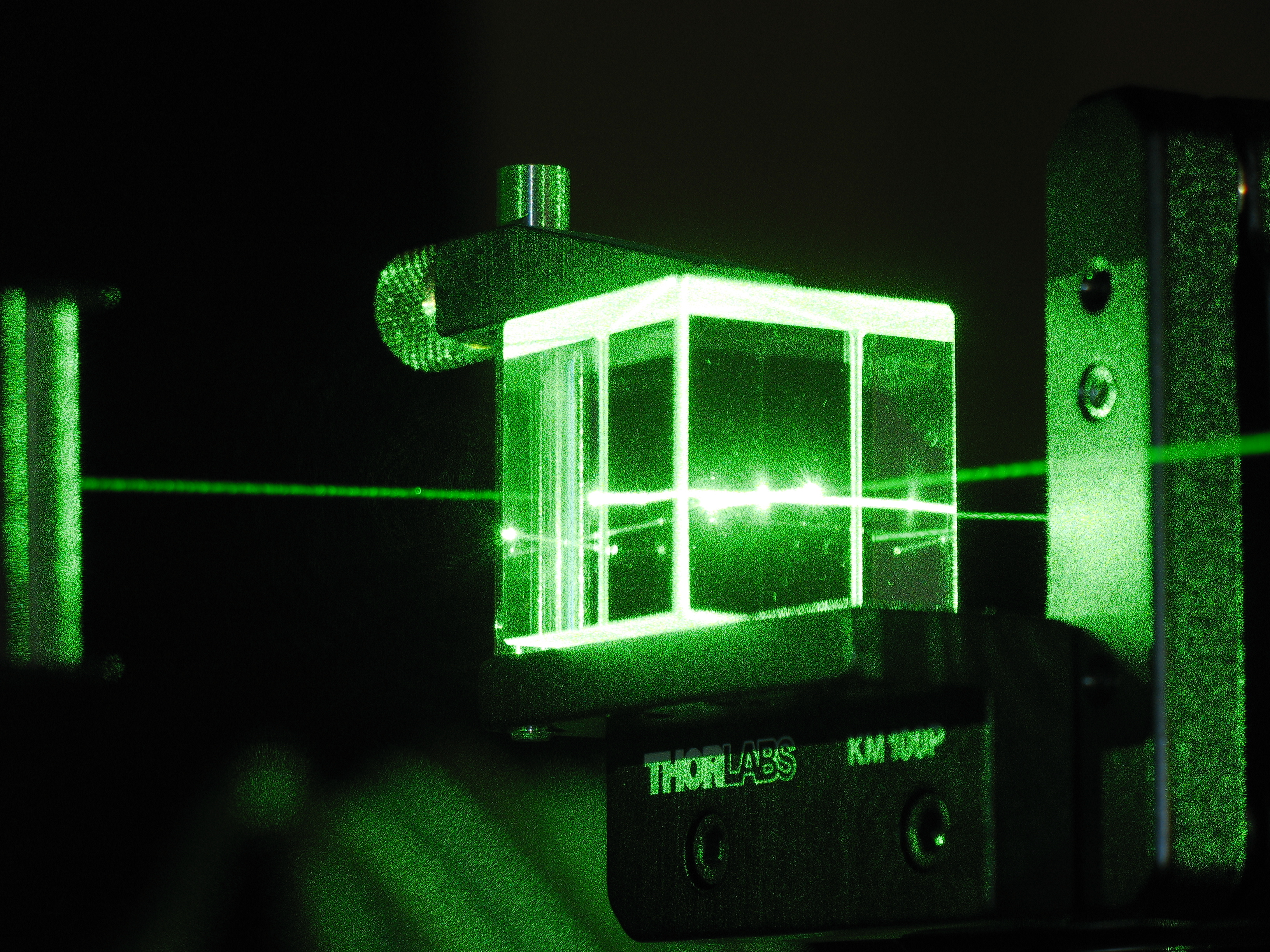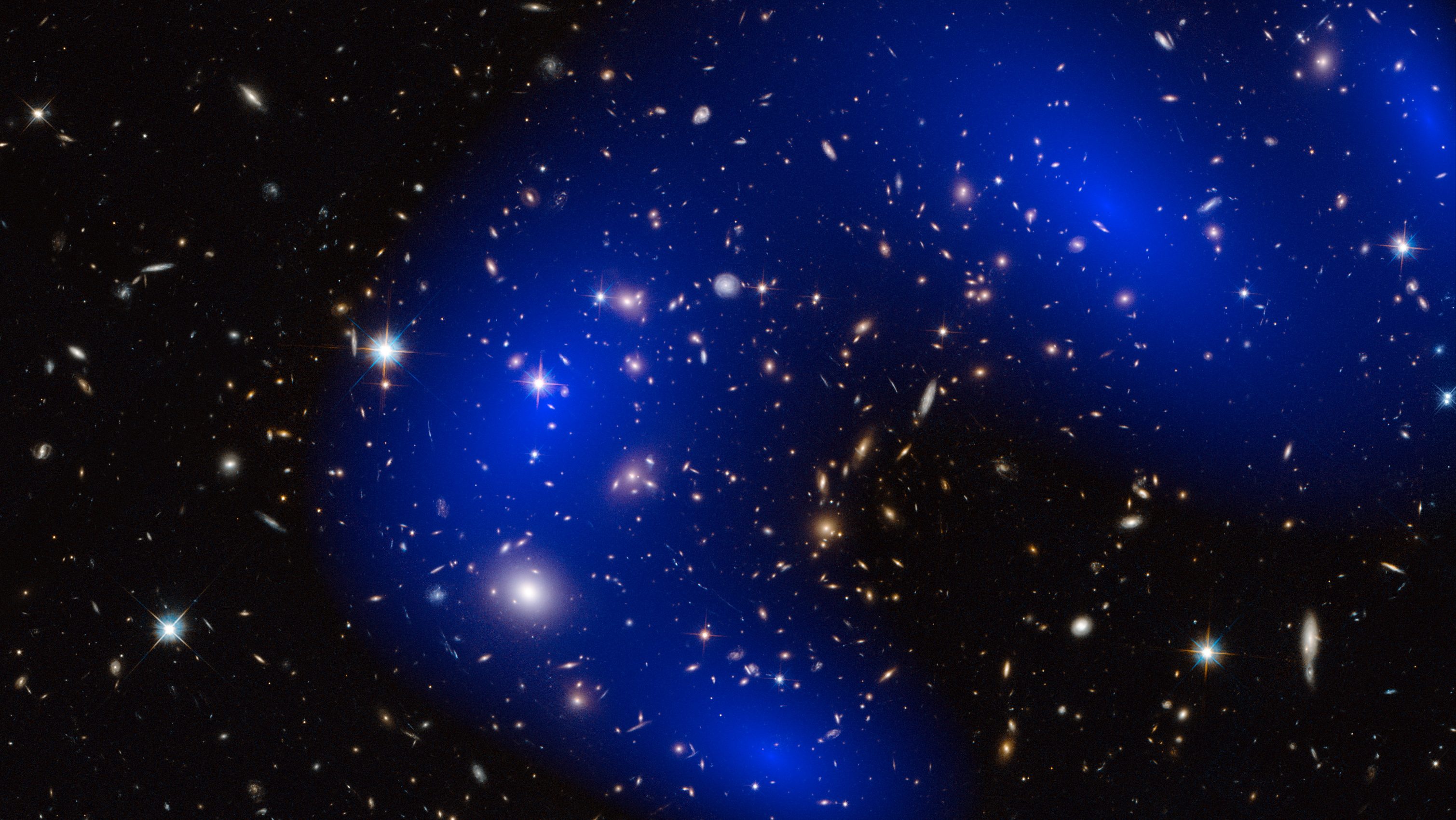How a failed experiment led to Einstein’s first big revolution
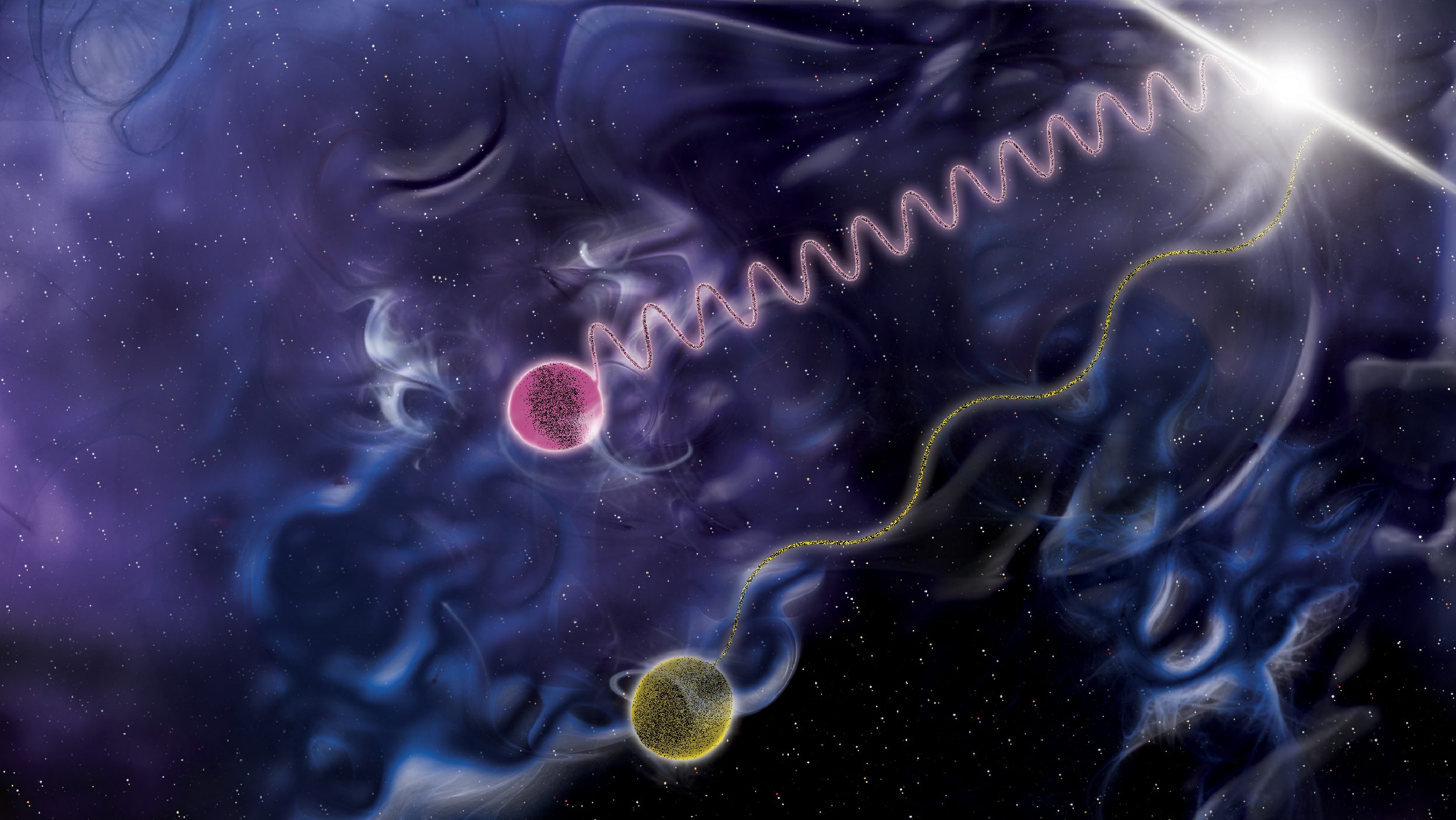
- Even though the speed of light is fast, at nearly 300,000 km/s, Earth moves fairly quickly around the Sun as well, with an average speed of 30 km/s in orbit.
- The Michelson-Morley experiment sought to leverage this fact to measure how light appeared to shift when you moved with (or against) the Earth’s motion, instead of perpendicular to its motion.
- Yet it saw no effect: giving a null result for the experiment. This was one of the most important measurements in physics history, culminating in Einstein’s original, special theory of relativity.
Imagine being alive in the late 1800s, and thinking about one of the most important physical phenomena in the Universe: light. A number of things that we take for granted today were already known about it. We knew that light:
- moved at the speed of light, around 300,000 km/s,
- exhibited wave-like behaviors such as interference and diffraction,
- and was electromagnetic in nature, with oscillating in-phase electric and magnetic fields.
We did make an underlying assumption about light, however, that wasn’t necessarily true: that, like all known waves, it required a medium to travel through. Just like water waves required the water, seismic waves required the Earth, and sound waves required the air to travel through, light was assumed to have a medium as well, known as the luminiferous aether.
Since light was known to propagate through a vacuum — such as the vacuum of space that separated the Earth from the Sun — it never occurred to most that light didn’t need a medium to propagate through; it was assumed that such a medium must exist, and simply had properties that were much more difficult to detect than the medium transporting other phenomena. In the 1880s, however, Albert Abraham Michelson, better known as A.A. Michelson, finally devised a method to detect and measure the effects of this aether itself. The experiment’s failure led to arguably the biggest revolution in the history of science.

We had already known, since the time of Galileo, how velocities worked for normal, low-speed, conventional objects. If you were a fish swimming through the waters of a river, for example, it would take you a different amount of time to:
- swim upstream and downstream by a certain distance, returning to your starting point,
- compared to swimming that same distance across the stream and back again, returning to your starting point,
because of the effects of the current of the river on you. The faster the current, the longer not only the time would be for each of these two scenarios, but the greater the time difference.
Similarly, if the river didn’t flow at all, but were rather composed of completely still water, those two scenarios would lead to not only a faster time than if the river possessed a strong current, but those times — swimming upstream and downstream versus swimming across the stream and back again — would then be identical. As long as the fish swims at a specific speed, and the water that the fish swims in is stationary, it doesn’t matter which direction the fish swims in at all. It will traverse the same amount of distance in a given amount of time.
As a matter of fact, the only “pathological” scenario, where the fish would fail to complete its journey, would be if the current in the river were faster than the fish’s maximum swim speed.

Michelson decided to use a very similar method to test out the behavior of light as it traveled through its alleged medium: the luminiferous aether. We don’t have a “river” to act as the medium that light travels through, as light simply travels through space. However, we do have something like a raft atop that river: planet Earth, which not only rotates about its axis, but which revolves around the Sun. In terms of relative speed, Earth’s orbital speed dwarfs its rotational speed by far, as it speeds around the Sun at an average speed of ~30 km/s, compared to ~1.67 km/s for its maximum rotational speed, which is achieved at Earth’s equator.
Similarly, we aren’t “fish” swimming through this river, but we can test out the behavior of light as it moves through space. After all, light isn’t just a beam or a ray, but has wave-like properties as well. Light of any variety comes in a particular wavelength, with that wavelength also defining light’s energy and color. When we take light of the same wavelength from two distinct sources — such as light that’s passed through a double slit — we observe the classic characteristic behavior associated with waves: both constructive and destructive interference. Where the “crest” of one wave lines up with the “crest” of another, we get constructive interference, resulting in brighter light, while when a “crest” lines up with an “anti-crest,” we get destructive interference, resulting in no light at all.

Michelson’s big idea was to take two beams of light and race them the same way two fish sent in perpendicular directions to one another would race across a river: one going upstream and then downstream, the other going across the river and then back across in the other direction. He couldn’t, of course, set up any apparatus that was fast enough to make this measurement directly, as the speed of light was remarkably, incredibly fast, at around 300,000 km/s, and the differences in arrival time would be tiny owing to the relatively slow speed — at least, compared to the speed of light — of Earth’s orbit around the Sun of just 30 km/s, or about 0.01% the speed of light.
Instead, Michelson realized that if he made the path length of both light paths identical, then he could send one down a direction that was oriented at 90° relative to the other one. As they reached the end of the line, he could set up a mirror at the end of the apparatus, and that mirror would reflect the light back toward their original location. When those two separate beams of light arrived at their point of origin, they should arrive simultaneously, assuming they covered the same amount of distance in the same amount of time. However, when the two light paths came back together, he could recombine them to see if there was even a tiny shift, which would produce an interference pattern.
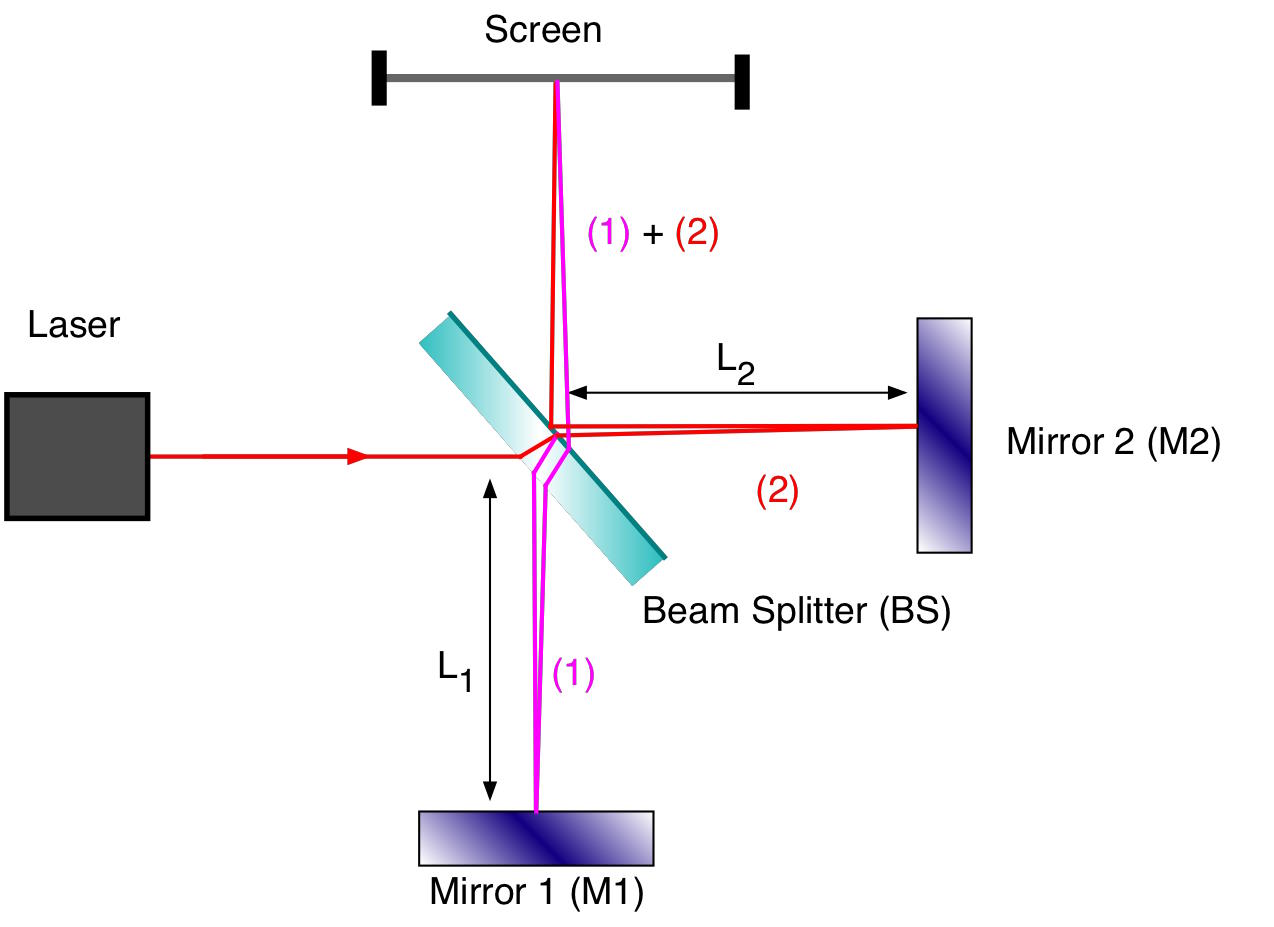
The big idea of Michelson was this. By seeing how the interference pattern shifted (or didn’t shift) when he then rotated his apparatus through a variety of angles:
- some oriented along with Earth’s motion around the Sun,
- some oriented perpendicular to Earth’s motion around the Sun,
- some oriented in an anti-aligned fashion to Earth’s motion around the Sun,
- and some at all the angles in between,
he would see whether the effect of Earth’s motion around the Sun did indeed change the amount of time it took that light to traverse those two mutually perpendicular paths.
As Michelson and many others imagined, if the apparatus were completely stationary relative to the luminiferous aether, then the light from both beams would traverse the distance traveled in the same amount of time. When you brought those two beams back together, you would observe that there was no shift in the observed interference pattern (sometimes called a fringe-shift) so long as they traveled the same distance in the same time.
However, if the apparatus were in motion relative to the aether because of Earth’s motion around the Sun, similar to how a raft floating atop a river moves because of the current beneath it, then it would take that light a longer amount of time to traverse the direction that co-moved with the aether compared to the direction that moved perpendicular to it. This, to Michelson, would be the critical test.
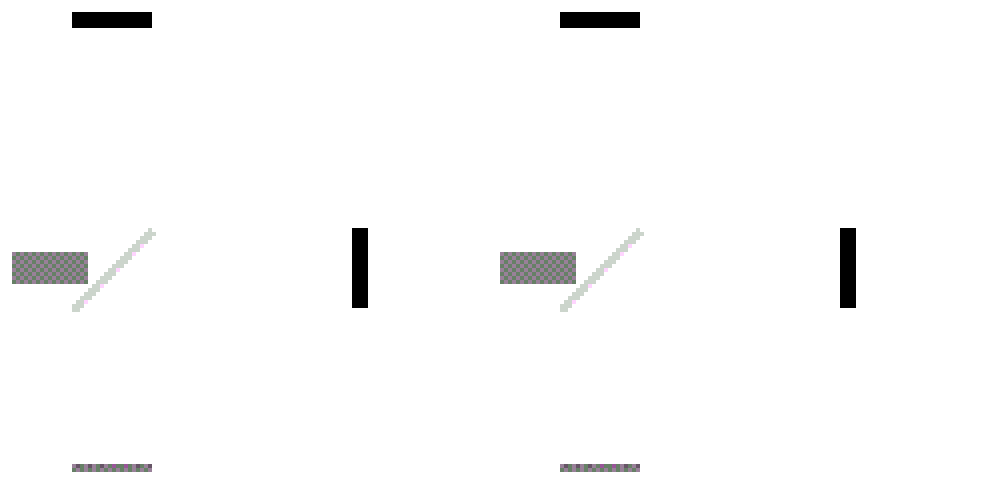
Michelson performed his first sets of experiments using precisely this type of apparatus back in 1881, and was immediately disappointed. He had built a large interferometer — a device that’s now known as a Michelson interferometer — with an arm length of 1.2 meters for each of the arms. His detector was sensitive down to a precision of 0.02 fringes, and with an expected shift of 0.04 fringes, he was chagrined to have not detected any such effect at all. Despite the fact that he performed the experiment multiple times throughout the day and night, even as the Earth rotated (which changed his position and his apparatus’s orientation relative to Earth’s orbit), he could not detect any such effect.
What Michelson did next was remarkable. Rather than claim a null detection, he went back to the drawing board to build a bigger, better, and more precise apparatus. With a new collaborator on board, Edward W. Morley, the two of them set up and executed many further refinements to this interferometer-type experiment, improving their techniques and the precision of their results many times. By 1887-1888, they had built a Michelson interferometer that was ten times the size of the original, and that could be rotated on a platform to any angle they desired at any time during the day. By the time they were ready to publish, their experimental precision was down to 1/40th of the expected, theoretical fringe shift predicted by aether theories.
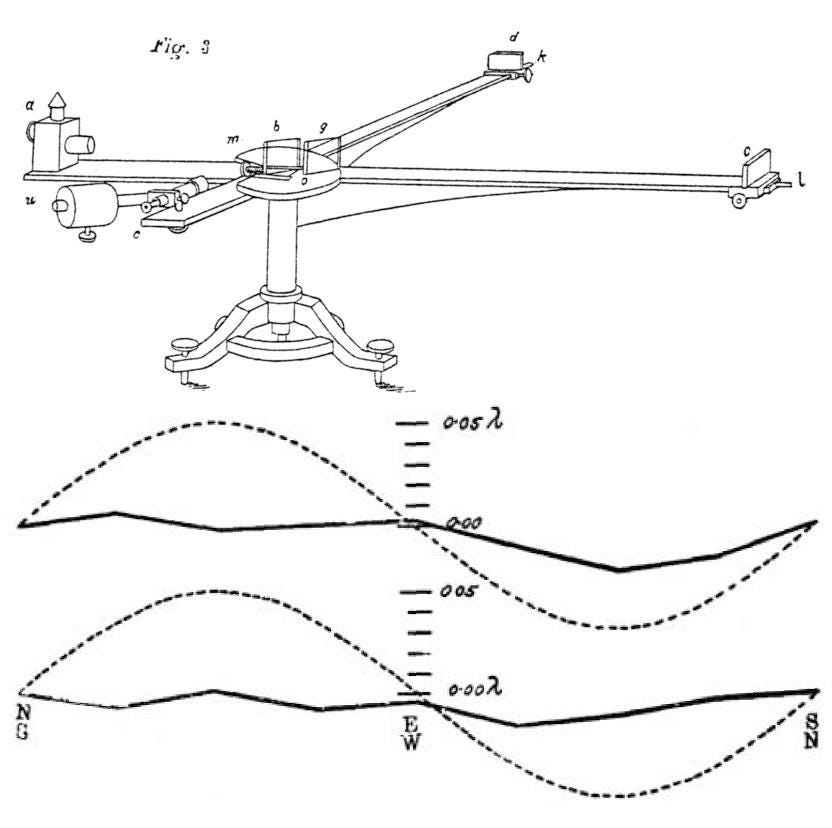
This time, they confidently could show there was a null result, and that the predicted shift did not occur at all. In fact, the only “shifts” seen at all were consistent with the experimental error: at 2.5% of the predicted value or less, consistent with absolutely nothing.
Did this lead to a rejection of the aether?
Not immediately. Some contended that the aether was being “dragged” by planet Earth, and that since the Earth was in motion around the Sun, the aether must be being dragged along with it, meaning that the Earth must be co-moving with the aether. However, that was swiftly shown to be wrong, as the observed phenomenon of stellar aberration and the previously-conducted Fizeau experiment ruled out the aether-drag hypothesis.
The next attempt to explain Michelson’s and Morley’s observations came from George FitzGerald and Hendrik Lorentz, who suggested that when objects move close to the speed of light, they experience lengths in the direction-of-motion to be contracted. By contracting the length that the light co-moving along with Earth’s orbit experienced, a null result would again be predicted, thereby saving the aether hypothesis if one insists on it.

For the next 18 years, the series of Michelson-Morley experiments were the key puzzling result that physicists were attempting to make sense out of. It was in 1905 that a series of brilliant papers by a young physicist named Albert Einstein finally solved the puzzle, eliminating the need for the aether entirely.
Although it’s not quite true that the Michelson-Morley experiment was the key motivator for special relativity, with Einstein himself instead crediting an earlier realization about induction by Michael Faraday, the resolution to the puzzle didn’t rely on an aether at all, but instead Einstein took a wholly new approach: by considering the possibility that the true invariant quantity in nature was actually the speed of light.
In other words, the question of whether the aether was:
- stationary with respect to the Sun,
- dragged by the Earth,
- or whether a more sophisticated “Lorentz ether drag” was at play,
could all be done away with if one instead assumed that there was no medium necessary for light to travel through; that simply having empty space would be enough. The only catch was that neither space, nor time, nor motion was absolute, but rather everyone would agree that the speed of light, to all observers, was the one true invariant.

It then became easy to show that no matter how you oriented the Michelson interferometer, and no matter how you put that interferometer in motion, there will never be a shift observed due to the orientation of the two arms. It further became clear that both the phenomenon of length contraction and the related phenomenon of time dilation could both be derived from that Einsteinian principle: that the speed of light was a constant to all observers in all reference frames. The aether suddenly became extraneous and unnecessary, and it was apparent that physics would be no worse off if the concept were discarded entirely.
Remarkably, however, the Michelson interferometer would come back in a remarkable way in the context of general relativity, as propagating gravitational waves could alternately expand and contract space itself in mutually perpendicular directions. As the path length increased in one direction (while shrinking in the perpendicular direction), there would be a periodic difference in how the fringes would appear to shift, in proportion to the frequency and amplitude of the passing gravitational waves. Today, observatories — such as LIGO, Virgo, and KAGRA — leverage the most precise Michelson interferometer setup ever to measure, directly, the effects of these gravitational waves.

The Michelson-Morley experiment remains, even today, arguably the most scientifically impactful null result in the history of science, although other null results are far more precise today. This was reflected in 1907, when one of the earliest Nobel Prizes in Physics was awarded to A.A. Michelson, for “his optical precision instruments and the spectroscopic and metrological investigations carried out with their aid.” For 18 years, physicists strove to reconcile the nature of light with the concept of the aether in light of Michelson’s results, and it wasn’t until Einstein came along that a satisfactory answer was achieved.
Even two years after Einstein’s great achievement, it was clear that it was a high-quality experiment that drove our understanding of nature forward more than any single realization. Today, it’s arguable that we find ourselves in much the same boat, as the overwhelming cosmological evidence for dark matter and dark energy demonstrates an enormous gap between how our Universe is behaving as compared to how we’d expect it to behave from what’s known and understood about physics and the behavior of matter. Perhaps it will take a 21st century genius of even greater caliber than Einstein to solve these modern day puzzles, but it will be the results of experiments, observations, and precise, high-quality measurements that motivate the next great scientific revolution, whatever it turns out to be.
